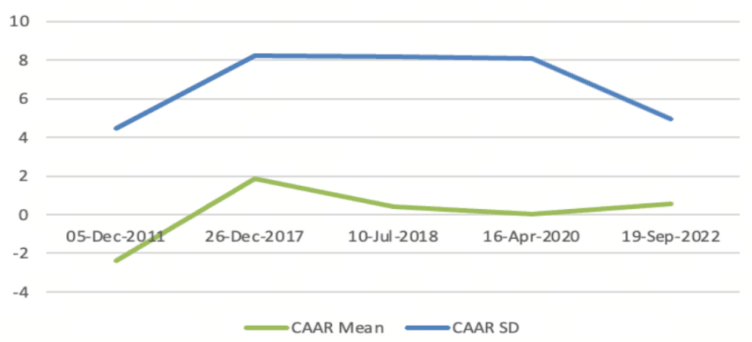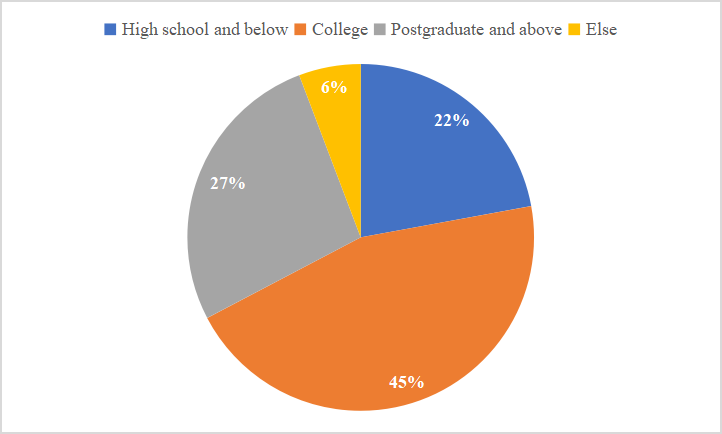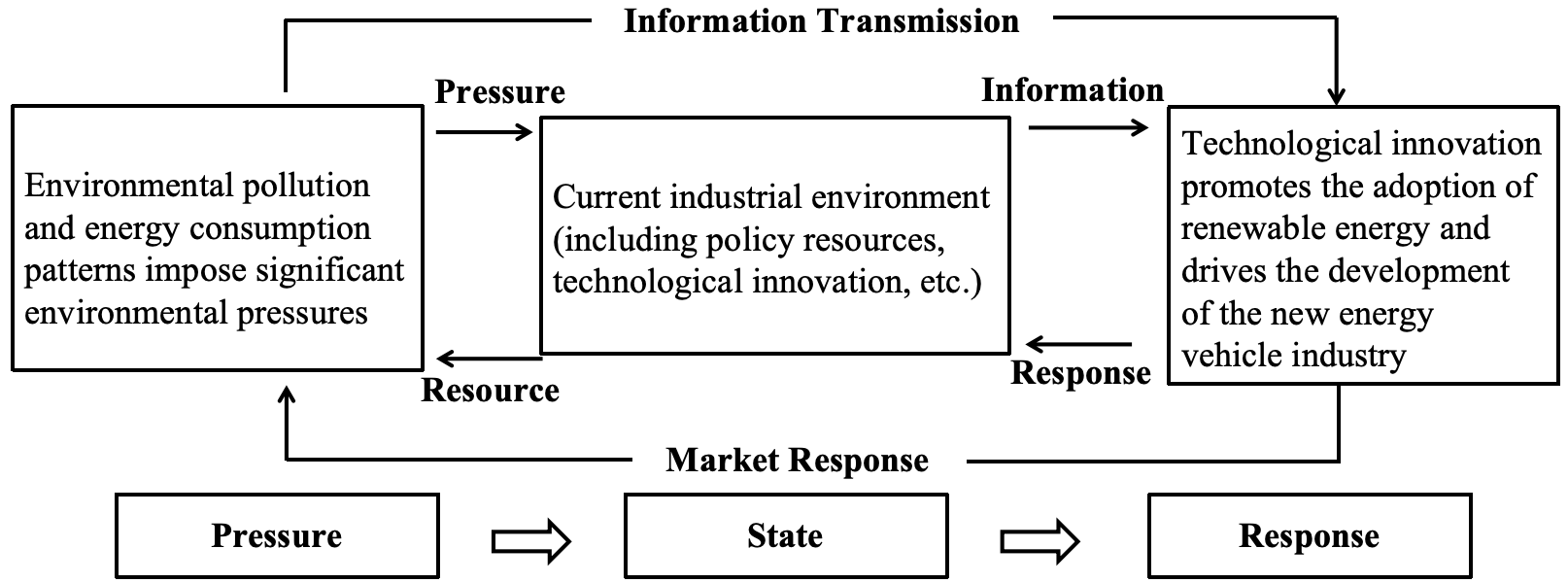

Volume 179
Published on June 2025Volume title: Proceedings of the 9th International Conference on Economic Management and Green Development
Schneider Electric actively practices green intelligent manufacturing and has established multiple "lighthouse factories" worldwide. By leveraging digital technologies, the company has built a green and efficient supply chain spanning the entire production process, achieving operational efficiency improvements and sustainable development. Through the application of big data, IoT, cloud computing, and other technologies, the enterprise can precisely monitor resource utilization and environmental impacts across supply chain segments, optimize logistics transportation, and reduce carbon emissions and energy consumption. Meanwhile, digital-intelligent technologies enhance supply chain transparency and compliance, effectively lowering operational risks and costs. The core enterprise drives collaborative technological innovation, guiding upstream and downstream partners to co-create a green industrial ecosystem and realize sustainable development across the entire industry chain. Taking Schneider Electric as a case study, this paper explores the mechanism of digital-intelligent technologies in corporate green supply chain upgrading based on resource orchestration theory. The research indicates that digital-intelligence-driven green transformation undergoes two transitions: progressing from the informatization stage to the intelligent stage, ultimately reaching the ecological stage. This evolutionary process constructs a three-phase pathway from green infrastructure construction to green capability enhancement and finally to green ecosystem establishment.

 View pdf
View pdf


As climate change accelerates, carbon reduction is a global priority. China, as the largest emitter, faces the challenge of balancing growth and sustainability. The influence of productivity improvements on emission reduction remains a key question. This study aims to explore the impact of firm productivity on carbon emissions. By panel data regression method, the paper uses data from China’s Shanghai and Shenzhen A-share listed companies from 2015 to 2022 to examine the relationship between enterprise productivity and carbon emission. The results show that increased productivity has significantly reduced the amount of carbon emitted per unit of output. In addition, heterogeneity analysis shows that regional characteristics play an important role on the relationship between productivity and carbon emissions, the impact in the eastern region is significantly stronger than in the central and western regions. Thus, enterprises should boost productivity through green innovation and energy optimization to reduce emissions and support sustainable development.

 View pdf
View pdf



Transportation, a significant contributor to global greenhouse gas emissions, is at the forefront of decarbonization efforts. New Energy Vehicles (NEVs) have emerged as pivotal in the shift towards sustainable mobility, particularly in China. Existing studies have indicated that subsidies provided by the Chinese government have played a significant role in promoting the development of NEVs. However, whether these subsidies have a similarly substantial impact on stock market performance remains undiscussed. This study explores the immediate impact of subsidy adjustments on stock market fluctuations within the NEV sector, an area previously underexplored. By employing an event-study methodology and analyzing data from 2010 to 2024, this paper identifies the short-term reactions of the stock market to subsidy announcements. The findings reveal that while subsidies have fostered market growth and technological innovation, their phase-out leads to mixed market responses, reflecting a complex interplay between policy changes and investor expectations. This analysis underscores the nuanced role of government interventions in shaping market dynamics and offers insights for policymakers aiming to refine subsidy strategies without destabilizing capital markets.

 View pdf
View pdf



With the end of COVID-19, the music performance industry is slowly recovering, with the most prominent growth in concerts and music festivals. With the development of online sphere, concerts and music festivals have become a more popular trend. In this social environment, concerts and music festivals are more closely connected with the economy and gradually become a way to attract tourists and activate the tourism economy. The purpose of this paper is to study the economic impact of concerts and music festivals on local performance, including the questionnaire data and analysis collected by the author. The research conclusion is that the psychology of fans is an important driving force to promote concerts/music festivals in different places. The popularity and influence of the performance guests are important factors in attracting local and remote audiences. High-income individuals tend to attend concerts/music festivals, and they are the main consumer group for these events, thus driving local economic development through related consumption. Finally, based on the above conclusions, the corresponding three suggestions are given in order to further flourish the music performance industry.

 View pdf
View pdf


This study critically examines the ethnocentric approach to appointing leadership roles in multinational corporations' (MNCs) foreign subsidiaries. Rooted in international human resource management (IHRM), the ethnocentric approach emphasizes appointing parent country nationals (PCNs) to ensure alignment with corporate culture, strategy, and objectives. While this method facilitates knowledge transfer, global efficiency, and cultural coherence, it poses significant challenges, including cultural conflicts, high costs, and local employee dissatisfaction. Using theoretical analysis and a case study of Japanese MNCs operating in China, the paper highlights the implications of over-reliance on ethnocentrism, including resistance to dynamic market environments and turnover of host country nationals (HCNs). The study suggests a mixed staffing approach, combining ethnocentric, polycentric, and geocentric strategies to balance control, local adaptation, and innovation. The findings provide creative insights for maximizing leadership to enhance both subsidiary performance and global integration.

 View pdf
View pdf



Under the global energy transition and the "dual carbon" goal, the new energy vehicle (NEV) industry has become a core area for countries to seize strategic heights. Although China's NEV industry has ranked first in scale worldwide, it faces challenges such as regional competitiveness differentiation, structural imbalances in technological innovation, and urban-rural gaps in market promotion. Existing studies often focus on single technical or policy perspectives, lacking a systematic analytical framework. This research constructs an evaluation system with 17 indicators based on the Pressure-State-Response (PSR) model and uses the fixed-base range entropy method to analyze the spatio-temporal evolution of industrial competitiveness in 30 provinces (regions/municipalities) from 2011 to 2021. It reveals the synergistic mechanism between technological innovation and market response and the causes of regional imbalances. The findings are as follows: First, the average NEV competitiveness increased from 0.212 in 2011 to 4.176 in 2021, with an annual growth rate of 17.8%, but regional differentiation intensified. Second, technological innovation serves as the primary driving force, with a strong positive correlation between it and market response. Provinces like Jiangsu and Zhejiang achieved sustained competitiveness improvement through a closed loop of "technology R&D-policy subsidies-market promotion." Third, uneven policy resource allocation, infrastructure shortcomings, and differences in technology transfer efficiency are the main causes of regional imbalances. Based on this, corresponding strategies are proposed.

 View pdf
View pdf


With major changes in the global luxury fashion industry, the traditional luxury industry has shifted from elite-driven development to a highly competitive market. This paper explores the development model of LVMH Moët Hennessy Louis Vuitton (LVMH) Group, a global leader in luxury goods, through a current and comparative analysis method, explores the differences and advantages of LVMH from its competitors, and examines how the group maintains its market leadership amid economic fluctuations. Through a strategic multi-brand approach, LVMH Group has diversified its product portfolio and catered to different consumer groups while ensuring the autonomy and creativity of its brands. The key to its success is strategic acquisitions, the combination of traditional craftsmanship with modern innovation, and market distribution strategies. The study also highlights LVMH Group's commitment to sustainable development and global cooperation as differentiating factors in its competitive strategy. However, the study acknowledges that the exploration of LVMH's influence on the entire industry is limited and suggests that future research can delve into the company's long-term sustainability and the role of digital transformation in its growth.

 View pdf
View pdf


Nowadays, sustainable development and international trade have become important topics in the world. With the growth of the global economy, every country faces a serious problem: how to develop the economy while protecting the environment. This is a difficult challenge. Therefore, the focus of this article is to explore how international trade can bring benefits to sustainable development. The core idea of the research is to explore how trade policies such as carbon tariffs can promote economic growth while reducing environmental damage. This research adopts a combination of data analysis and case studies, and the relationship between trade practices and sustainable development efforts in different countries is also examined. The research question is: Can trade policies support environmental goals without harming economic interests? At the same time, the role of governments and international organizations in creating a fair-trade system is also examined in this article. The research results show that as long as appropriate policy arrangements are made, trade can become a tool for achieving sustainable development. It is also ensured that both developed and developing countries can benefit from it.

 View pdf
View pdf


In the context of the digital economy, the digital transformation of industries has become an inevitable trend. Tourism is an important part of people's aspiration for a better life and a crucial link in promoting the optimized transformation of the economic and social development. As an integrated industry of culture and services, traditional festivals have the characteristics of high added value and low energy consumption, and they have a profound impact on regional tourism economic growth, industrial structure, and employment levels. Under the digital background, how to explore new advantages of traditional festivals and cultivate new models for tourism development has become a key and difficult issue in further enhancing the tourism economy. Therefore, this paper focuses on the digital background to explore the promoting role of the value of traditional festivals in the development of the tourism industry, excavate the advantages of traditional festivals, boost new models for local tourism development, achieve leapfrog development of the tourism industry, provide new momentum for economic growth, and expect the tourism industry to achieve high - quality development.

 View pdf
View pdf


In recent years, AI (artificial intelligence) has already become the most debatable topic among societies. One issue, or anxiety, has risen from this historical revolution: same as what had happened in the last two times, the AI revolution could lead to an inevitable unemployment and structural overturn in societies, frightening people with the severe consequences of losing their jobs. This paper aimed to further investigate the change in society caused by AI revolution by viewing the latest datas, reports, and essays that also focused on the study of AI revolution. Admitting the forecoming unemployment and job transition, this paper found that, different from the traditional transition of demanding jobs and skills, artificial intelligence replaces some occupations, but it creates new employment opportunities for some non-professional or low-level labor forces. This paper has also found that AI mainly replaces some STEM occupations, such as big data processors, and some occupations involving simple interactions, such as online customer service representatives. Therefore, this paper also discussed the specific types of skill demanded in the future.

 View pdf
View pdf




